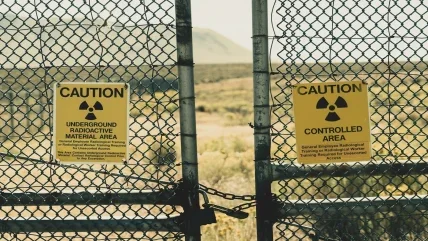
The UK could make lifetime savings of £300-450m (US$373-560) in 2020 terms if it sorted so-called intermediate level waste (ILW) and diverted less hazardous waste to a near-surface facility instead of sending it for deep disposal. The figure came from the UK’s Nuclear Decommissioning Authority (NDA) during the government’s recent assessment of whether to change its policy framework for waste management and its definition of ILW.
In a recent consultation the government highlighted scientific and technical advances and deeper understanding of the nuclear ‘back end’. It said, “The UK radioactive waste management landscape is changing as the decommissioning and clean-up of the current nuclear infrastructure and decommissioning across the non-nuclear sector progresses.” As a result, the government wants to consolidate and update policies on decommissioning and waste management into a single coherent framework. It wants to “reduce unnecessary burden, unlock more innovation and sustainable ways of working in managing and disposing of radioactive waste from the nuclear and non-nuclear sectors.” Its proposals aim to “facilitate and encourage earlier and more cost-effective decommissioning”.
ILW is in view as an area where cost savings can be made. The UK government has three waste categories (although other language such as ‘highly active waste’ is used by devolved administrations and in some contexts):
- Low level waste (LLW) – has a radioactive content not exceeding 4 Gigabequerels per tonne of total alpha activity or 12 Gigabequerels per tonne of total beta/ gamma activity.
- Intermediate Level Waste (ILW) – waste exceeding the upper boundaries for LLW, but which does not require heat generation to be taken into account in the design of storage or disposal facilities.
- High Level Waste (HLW) – waste in which the temperature may rise significantly as a result of its radioactivity, so this factor has to be taken into account in the design of storage or disposal facilities.
Currently, all intermediate level waste is to be disposed of in a geological facility along with high level waste, “regardless of whether the risk the waste poses to people and the environment requires the level of isolation and containment provided by geological disposal.” Now it wants to investigate “more efficient and proportionate management of this waste” and earlier decommissioning. It would take a ‘risk informed’ approach to waste in which the radioactivity is just one of the properties considered. The consultation points out that the waste varied and some (even LLW) may contain radionuclides with high levels of toxicity or other toxic heavy metals or organic compounds that are harmful to human life or the environment. In addition, the physical properties of the waste, ranging from large solid objects to flocs and sludges, can pose additional hazards.
The government believes that a new policy framework would help speed up waste and risk management at sites such as Sellafield. It would allow more cost-effective and efficient use of the limited capacity in highly engineered stores. The NDA has estimated that between 6,000 m3 and 10,000 m3 of ILW (packaged volumes) assumed to go to a deep disposal site could instead be suitable for surface disposal. This is based on a first waste emplacement date of early 2030s.
The next step for the UK is further consultation on the new framework. In the case of ILW disposal, that will seek views on proposals:
- To amend current policies to allow disposal of ILW in near-surface facilities.
- For a new policy framework to facilitate the development by the NDA of near surface disposal facilities for less hazardous ILW in England and Wales.
- To promote the use of on-site disposal of radioactively contaminated waste from the decommissioning of nuclear sites, subject to environmental permits.
In any event, the government says a risk-informed approach should also bring forward other benefits in managing waste. It could increase the diversity of technologies, options and infrastructure for radioactive waste management. It could also promote more consistency in dealing with nuclear waste across the UK.






